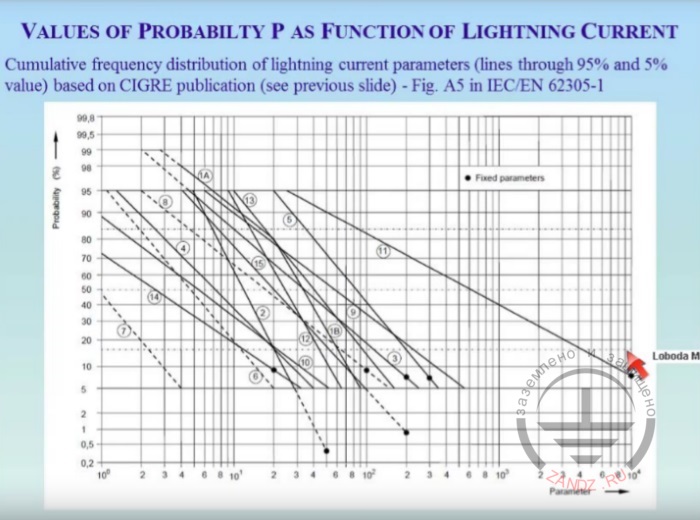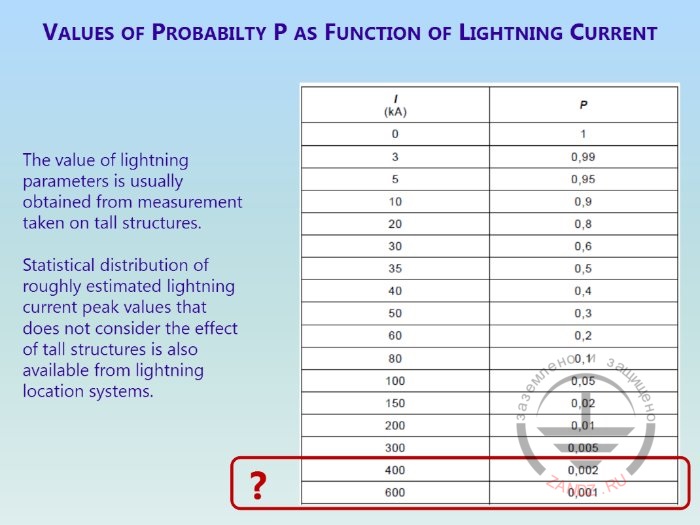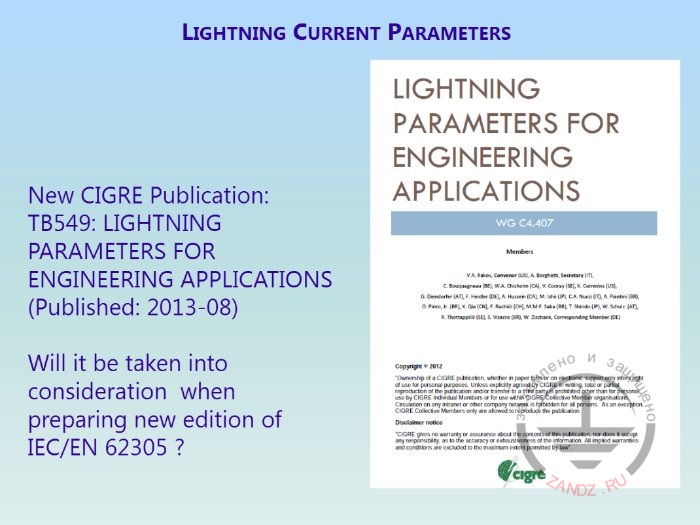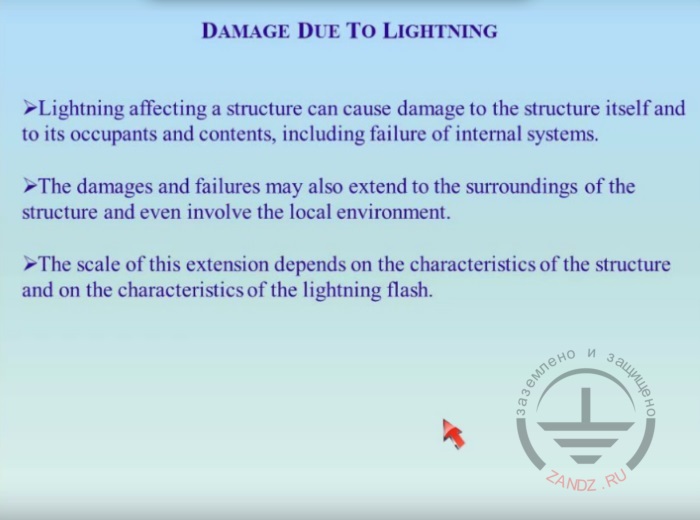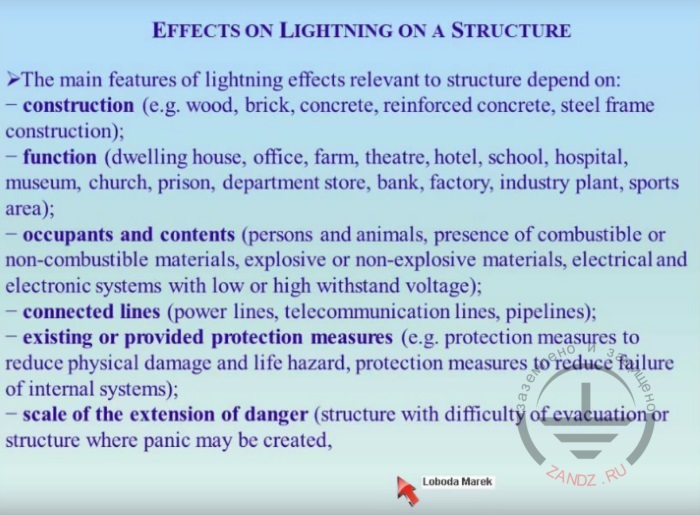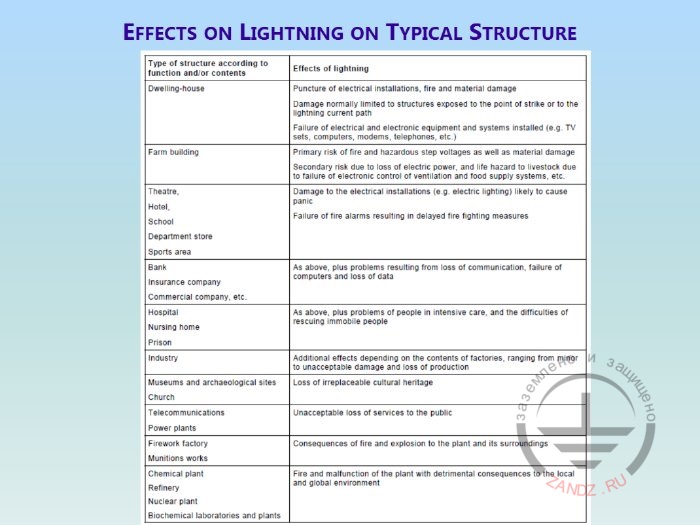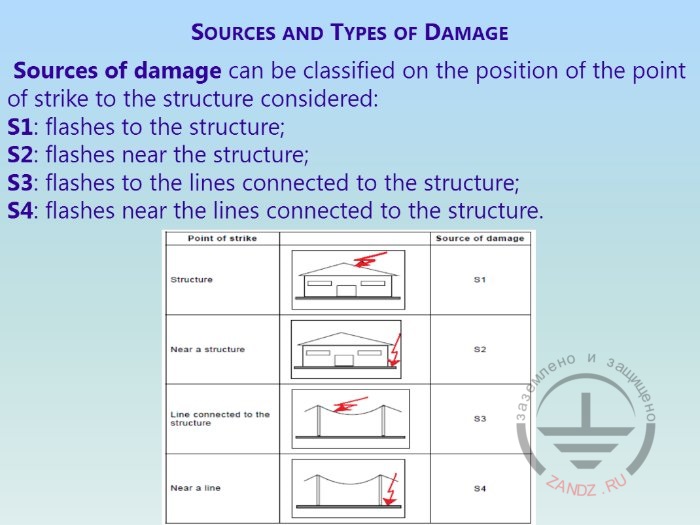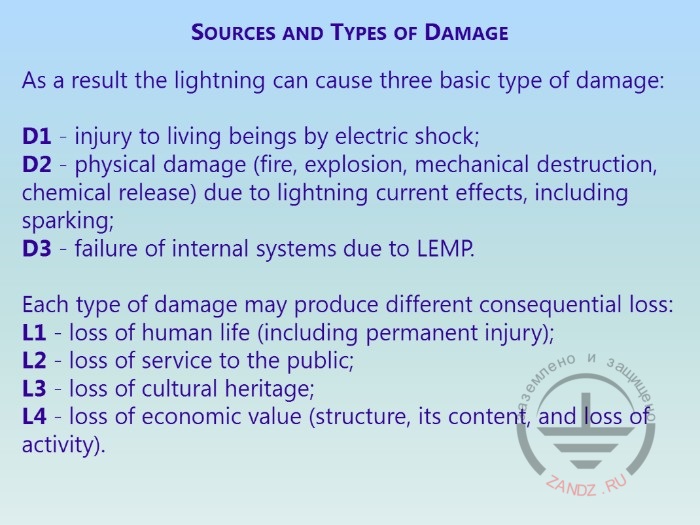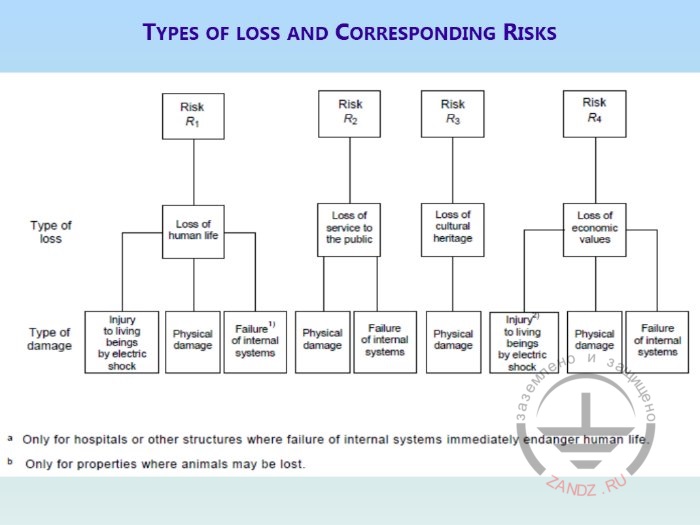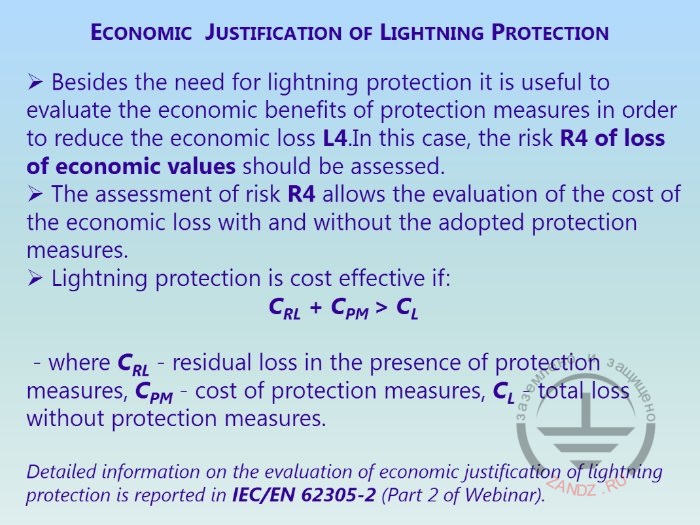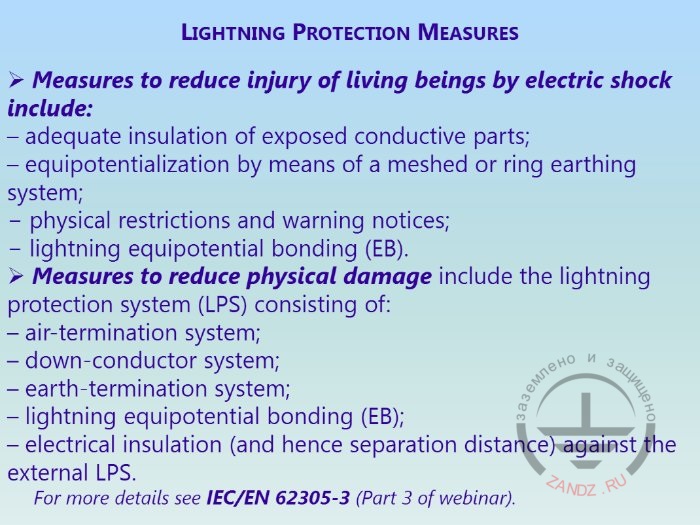The first webinar of a series "Grounding and lightning protection: IEC 62305 standard"
Webinar text. Page 2
Quick navigation through slides:
1. International electrical technical standard IEC 62305
2. Service record of Dr. Marek Loboda
3. Main standard series
4. Risk assessment methods
5. Configuration of IEC standards
6. General topics and parts of the standard
7. Principles of the standard first par
8. Exceptions of IEC standards
9. Descriptions of lightning current parameters
10. Charts of possible lighting components
11. Lightning current parameters
Page 2:
12. Lightning strike impact chart
13. Value of probable current strength
14. First session of questions
15. Damages because of a lightning strike
16. Characteristics of a lightning strike
17. Table of effects from a lightning strike
18. List of possible places of a lightning strike
19. Classification and results of lightning strikes
20. Correlation between types of risks and losses
21. Economic justification of lightning protection. Second session of questions
22. Lightning protection measures
23. LPM — lightning protection measures
24. Main criteria for lightning protection structure
25. Chart of lightning protection levels
26. Chart of lightning protection levels effects
27. Minimal values for lightning protection efficiency estimation
28. Lightning protection zones
29. Description of lightning protection zone LPZ by LPS
30. Description of lightning protection zone LPZ by LPM
31. Protection of constructions part 1
32. Protection of constructions Part 2
33. Questions and answers
Chart of lightning strikes impact
— Individual numbers are shown in this table and we see the statistical distribution of lightning strikes. Of course, design of lightning protection measures should be subject to the typical lightning protection standards. We must not admit high values and keep all the values below maximally admissible.
Current strength probability value
— Of course, the probability of current strength of such a phenomenon as a lightning strike depends on the intensity and duration of the flash. We can research coming out of most minimal values up to the highest. Even such values as 400 kA are studied.
The first session of questions
— Of course, the researches keep going and new data arrive, but now there are existing parameters of lightning protection systems for technical used, they were published in 2013. And now the specialists discuss publication of a new standard. We've talked for more than 15 minutes now. Do you have any general questions? I will be grateful for them. I will try to speak Russian, but if I can't, I will ask our translator to help me. Please, don't be shy, you can write your questions in the chat, I am ready to read them.
— I see the first question: "With what device is it possible to register 400 kA current?" It is a very interesting question. It depends on technical conditions and constructions.
— The next question:" Are you familiar with the RF regulations on lightning protection? What is the crucial difference of IEC standard from the Russian AD and IS?"
— Anastasia, what do abbreviations AD and IS mean?
— Unfortunately, I don't know these abbreviations in Russian too. Well, standards and regulations on lightning protection in the Russian Federation.
— Unfortunately, I don't know modern Russian standards well, but since I could take part at the Russian conferences on ground electrode systems and lightning protection, I learned something there. I know, there can be several types. If somebody is building a structure with the participation of foreign companies, they take European, international or IEC standards. My colleagues from Russia told me so. But sometimes it happens so, that there is also a lightning protection standard and manual on the arrangement of lightning protection, but I am not sure in Russian language. I don't remember, did you have a chance to read a book on lightning protection which was published by Moscow Energy Institute, by professor - I forgot his family name. One of the professors wrote a book about bases of thunderstorm protection in Russian. But I don't know how relevant it is in Russia. I see somebody wrote - it is industry standard, but they can be different, depending on what company issues it - telecommunication and electric energy company. We have one Polish standard in Poland, one European or IEC now. And this manual is written depending on who uses it; I think Bazeyan can tell you more on this topic. Somebody wrote that there are no new standards. It means why our international standards are being prepared and developed, from the point of view of European or International specialist. That is why, there are no national or institutional standards in order to use it in different countries. There are countries that take both national and international standards. But I don't know how it is in Russia. I have to say that Russia is a formal member of the technical committee 81, which prepares international standards on lightning protection and as far as I remember, there are no Russian specialists who would take part in the committee meetings. Though, when we have a form for the recent project version of the new standard, it happens so that we get comments and questions from the Russian standardization committee. There is another essential question, connected with ESE lightning protection. And I'd like not to talk about that today, because we have no time. There was a wish to continue the webinar and talk about the second and third part of the standard. The third part of the standard 62305 is connected with a lightning rod and I would say something on the topic of ESE lightning protection. But we need to say, that the international standards do not have peculiar possibilities to define protective zones for the so-called ESE lightning rods. One method is taken and if somebody installs an ESE or conventional lightning rod - in any case it is necessary to define according to the protection zones standard. So, if you accept that, I would continue the discussion about ESE lightning protection at the possibility to talk about the third part of international standards.
— Marek, there is one question along others. Maybe you did not notice it. Is it possible to write a list of IEC regulations and methods which are used at the design of lightning protection?
— Yes, of course. I did not do it in the presentation, because it is connected with only one standard, but I can make such a list. If you wish, we can make it, but not today. If you have personal questions - I wrote my email address on the first page, it is marek.loboda@ee.pw.edu.pl - my address which I use at the university. If you have any detailed questions please do not hesitate to contact me and send me emails. You can write me in Russian. But I will answer you in English, because I have no possibility to write in Russian. Shall we continue?
— Yes.
Damage due to lightning strike
— The next topic is damage which appears because of a lightning strike. It is a very important question, because we know, that there could be a lot of damage. There is usually such a question - who will pay for the damage brought by lightning? There are two variants - either the building owner, or insurance company. But there are more general problems.
Lightning strike characteristics
— And also the damage depends on the type and characteristics of a lightning strike. If to view structural characteristics of a lightning strike, we need to take into account of what this building is made - wood, insulation materials, brick or maybe reinforced concrete or steel. It is very important to estimate lightning strike risk for the further lightning protection measures. The next parameter - is function of the building. What function the building carries - be it a residential building, office, hospital, school, museum, bank, shop, factory or sport zone. We need to understand what the intention of this building is. We also need information about what is inside the building: how many people, animals, how often are they inside the building? Of what materials it is made? Can they explode or not? This information is very important. It relates to services. These are power lines, communication lines, pipe lines or some data transmission. And of course we need to understand, if some lightning protection was already applied or not? For example, was protection for the reduction of physical damage and life threat applied or not? And what is the volume of this damage impact? Is evacuation of citizens and people from this building difficult or not? Will people inside this structure be subject to a panic?
Lightning strike effects chart
— Here you see the list in accordance with a different type of a building - first column. And the second column - it is an effect which is produced by a lightning strike. I am not going to enumerate everything here; you can see what can happen to a single-family house, with a residential house, hospital or hotel.
List of possible lightning strike points
— And the most important thing is to understand what is the building made of and what equipment is used inside. It will help to choose an adequate system of lightning protection. But damages and failures of electronics may not only appear at a direct lightning strike into the building, but if lightning strikes near the building, it may cause the same thing, the same damage. Because we have an electromagnetic channel and it can bring damage to the building.
Classification and result of lightning strikes
— And here you see classification of damage and result of lightning strikes it brings. The first thing - injuries to animals or human beings by electric shock. Second - physical damage. Fire, explosion, mechanical destruction or emission of chemical substances. The third - failure of internal systems due to electromagnetic pulses from thunderstorm discharges. Each type of this damage can bring to the further losses. They can be different: loss of human life, injury, loss of public services, loss of cultural heritage or even loss of economical indexes. I was once asked how to estimate a human life. Of course it is hard to estimate. There is no price to your health, it is priceless. Of course, there are different points of view on this matter but we need to understand that there are different outcomes of the damage brought by lightning. Electric power line or telecommunication line can be damaged. There are some very special buildings, which carry cultural heritage. These are churches, museums; maybe there are some old showpieces in these museums, which are very precious. And in the majority of cases, there appear economic losses, destruction of buildings, and content of these buildings. We can lose computers, electronic or electrical systems and have completely disconnected houses.
Correlation between the types of risks and losses
— Here you see the general correlation between different types of risks and to what types of losses they bring. Loss of human life, injury, loss of public services, loss of cultural heritage or even loss of economical indexes. And the last line - type of damage.
Economic justification of lightning protection. The second session of questions
— So, in many countries, lightning protection is based on the economic justification. It means the idea of choosing lightning protection measures should be based on the risk estimation. In many cases, for small houses, the risk is connected with the loss of economic indexes. How to calculate these risks? It is written in the second part of IEC standard. And we plan it to be the second part of the webinar. I think I will even provide you the software which will help you to calculate the risk. But if you already counted it, you will have to assess what will be the effective protection from this risk from economical point of view. General damage to a building or structure, if there are no lightning protection systems, should be less than the sum of residual losses at the existing protection measures and prices for lightning protection measures. That is, if the sums of these indexes are greater, then we need more efficient lightning protection systems. In other cases, which relate to the risk of life loss or some severe injuries, wounds, losses of cultural heritage, then in these cases, we need to apply effective lightning protection measures and define them by the formula and in accordance with the level of protection required for these buildings. If you don't mind, let's try to talk in an interactive mode again. Question-Answer. I will finish here and will wait for your questions. If you have something to ask, please write. I will try to read and answer.
— Do you have an adequate method to calculate lightning protection and where to see it?
— I didn’t understand the matter of the question. Please clarity what you mean. What do you mean saying method? What do you mean? What lightning rods, grounding systems can be used? What specifically? Could you give more detail on the question? Of course, the second part is very important. If you read the general idea of the information now, you will have more detailed questions, I will be able to answer them, when I talk about the third part of the standard. We've only talked about the second.
— Last question: «What is meant under loses of cultural heritage objects? Result of a fire in a museum, for instance?" Yes, almost. It is a good example.
— "It is not a monument on a square?" It depends on the type of a monument and how long it's been there. I would not want. It means, if somebody says, this is a cultural monument, we need to store it. But it's the decision of the local government. If you remember and saw football in Rio, there is the most important monument of Jesus Christ. There is lightning protection on this monument. Hard to say if they preserve this monument or not. It's the decision of the designer or owner of this monument. Well, how to say this? I don't know, but this decision should be local. The designer should help how to preserve it. See slide 20.
— «"Is there an overlap of criteria R1 and R2?". No, but it means, if we calculate the risk , we get... I'd like to talk about it next time. We get the value of the total risk. It has components. Look. Results for risk R - it is sum of risk R1, R2, R3 and R4. It depends on the object type and construction which risks are solved 1,2,3 or 4 or only 1 and 4. But if it is a museum, where there are people and historical exponents, then the risk sum of R1 and R2 is counted. It depends on the object type.
— The next question: «How to estimate the economic damage in the conditions of growing inflations?". Well, it is an interesting question. It should also be in the second part of the seminar.
— The next question is very similar. It is for an industrial object. Of course, if there are people, there are types of constructions, devices. We are discussing the total risk sum of risk components depending on the type and construction of the object. There are people, there is industry, there is residential building - there are risk components. Risk sum influences the determination of level and methods of protection. Of course, cost of lightning protection arrangement depends on the country, but prices can be different. And the same is for determination of not only lightning protection facility protection; this can be counted and solved. But if we know the risk and can expect that there will be a direct lightning strike, say once in 100 years - we can live a life in this time, but it will be once in 10 years - we need to decide if we accept this risk and pay a certain cost for lightning protection. I don't know if I answered everything or not? Yes, it's the last one.
— Yes. Yes, all questions are answered.
Lightning protection measures
— If you don't mind, I will continue. It's the last part of our webinar. It relates to lightning protection measures. The measures depend on the individual type of damage. How can we protect living beings from electric shock? Or use adequate insulation of electric conductive details. Or equipotentialization by the means of cell or circular grounding system. Or equipotential bonding. Grounding systems of different types, cell or circular. Inside the building you may have electric conductive details and they should be insulated. And of course, especially on open spaces, where we can't install lightning protection measures. We have physical restrictions and warning signs. We have to warn workers, people, that there is lightning hazard for them. If there is a lightning strike, they should know about it and should apply preventive measures. Hide in some safe places. The second part of measures - are measures on the reduction of physical damage.
<< Previous Page
slides from 1 to 11
Next Page >>
slides 23 to 33
Useful materials for designers:
- Webinars with the leading industry experts
- Everything for the calculation of grounding and lightning protection
- Useful materials: articles, recommendations, examples
Related Articles:


